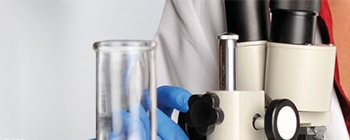Cannabis Pesticide Testing
Un moment pendant que nous récupérons vos résultats ![]()
Comme avec les autres produits agricoles, les pesticides, antifongiques, et autres produits chimiques sont appliqués aux plants de cannabis afin accroître leur rendement et réduire les dommages provenant des micro-organismes et insectes. Le cannabis légal pour utilisation récréative a des exigences par rapport à la teneur en résidus de pesticides de la fleur de cannabis et d’autres produits.
Ces agents peuvent être nocifs pour les humains, les animaux et l’environnement, surtout à ceux qui y sont exposés pour de longues périodes. Comme avec le tabac, les composés complexes et les mélanges peuvent être produits lorsqu’on fume le cannabis, produisant ainsi des matières toxiques. La fumée de cannabis peut contenir des résidus de pesticides s’ils se trouvaient aussi sur le plant.
Les denrées agricoles traditionnelles sont assignées des limites maximales de résidus (LMR) pour les pesticides. Les LMRs sont habituellement établies par le gouvernement en tant que partie du processus d’inscription des pesticides, et la même approche peut être utilisée pour le cannabis et les produits cannabinoïdes.
La chromatographie en phase gazeuse-spectrométrie de masse (CPG/SM) n’est pas une méthode qui convient pour les composés ioniques et polaires thermiquement labiles, donc n’est pas la meilleure option pour l’analyse des pesticides du cannabis. La méthode de choix pour l’analyse des pesticides du cannabis est la chromatographie en phase liquide-spectrométrie de masse tandem (CPL/SM/SM). Elle est sélective, sensible, peut être utilisée avec les standards de pesticides, et fonctionne avec une grande gamme de composés et de compositions d’échantillons.
L’analyse des résidus de pesticides du cannabis est aussi influencée par les différences en concentrations de résidus de pesticides et des cannabinoïdes et terpènes co-extraits. Ces matériaux peuvent avoir un effet sur le système SM/SM, qui peut alors nécessiter davantage de temps d’arrêt et d’entretien de l’instrument. Cet effet peut être amélioré en utilisant une méthode d’extraction QuEChERS, en diluant l’échantillon, et en utilisant des standards de calibrage interne et avec adaptation matricielle.


